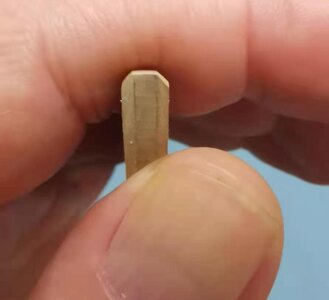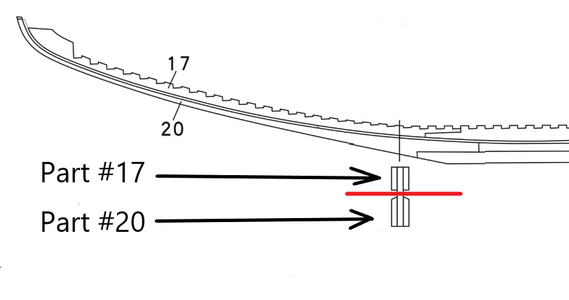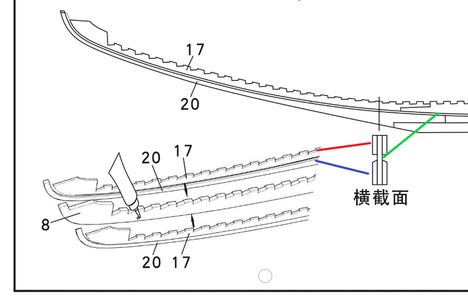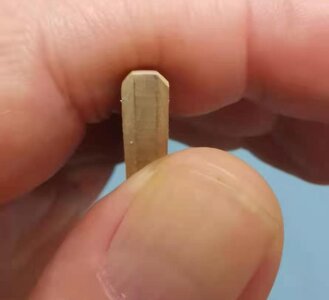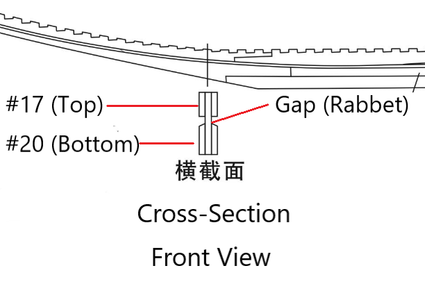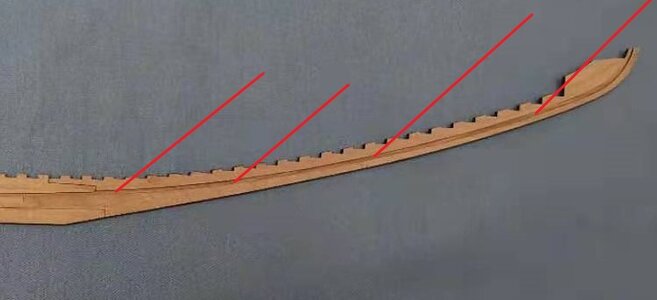- Joined
- Jan 9, 2020
- Messages
- 10,534
- Points
- 938

When teaching my higher-level and MBA students, stress as part of studying is always a big concern. I present them with the following scenario: You have three tasks - one is difficult while the other two are relatively easy. Which do you do first? The correct answer, of course, is the difficult one - otherwise the difficult task will always remain at the back of your mind, causing undue stress. So today, I took my own preachings to heart and practised what I preached. I knew I said last night that I would attach Part #17 to the Port side, but decided to tackle the tricky Part #18 head-on. That way - if successful - I could also show you what one completed side of the keel assembly looks like.
Seeing that we are busy with the Starboard side, I chose the appropriate drawing and this is what it looks like.

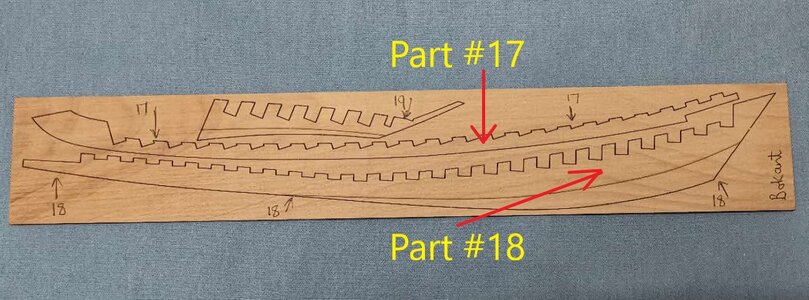
The actual sheet in wood. The side being shown above is obviously the Port Side.
Our assembly drawing looks as follows:
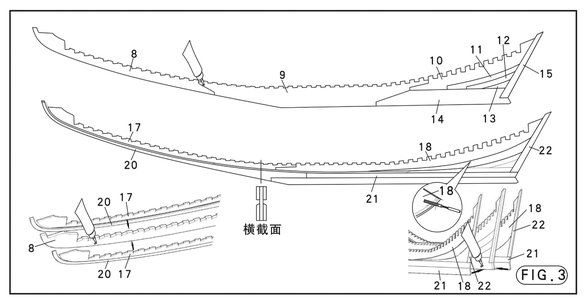
By now, you should all be very familiar with this drawing, BUT we need to zoom in ...
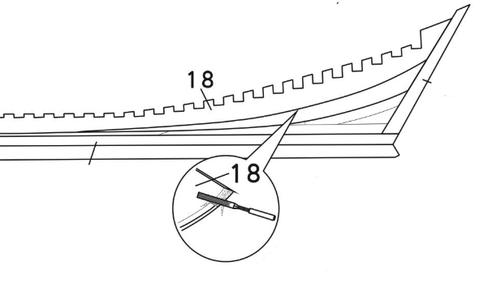
Here we can clearly see that Part # 18 needs to beveled up the indicated line before it is attached to the keel.
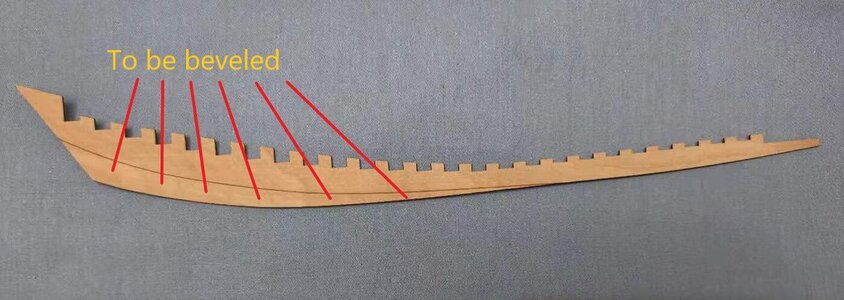
Part #18 removed from its sheet with the reference line clearly indicated. The red lines indicate the surface area that needs to be beveled.
The beveling in itself is not the tricky part. Here comes the challenge: Part #18 is 1mm thick and at the widest point the width measures 11mm! Can you imagine beveling an area of 11mm but the wood you have to work with is only 1mm thick? In theory that would mean that the part would be paper-thin at the bottom - in this case, theory and practice agreed totally. By the time I was finished, the sheet actually had a razor-like edge.
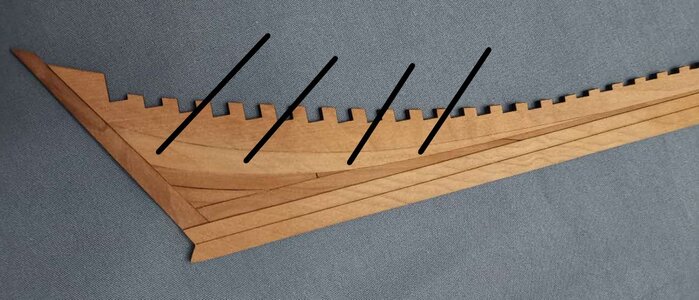
The beveled part glued in place. When gluing this part to the keel, make sure that you clamp the beveled portion really well to the keel and that leave it for the glue to dry properly. The piece fits beautifully into place - just look at the alignment with the sternpost! Remember Part #18 goes all the way to the top of the keel where it lines up with the notches so the fit is really extraordinary!
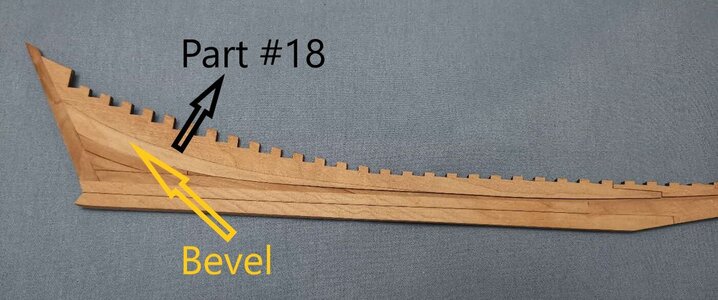
Here is the complete Part #18 attached to the inner keel.
TAADAAA!!!!
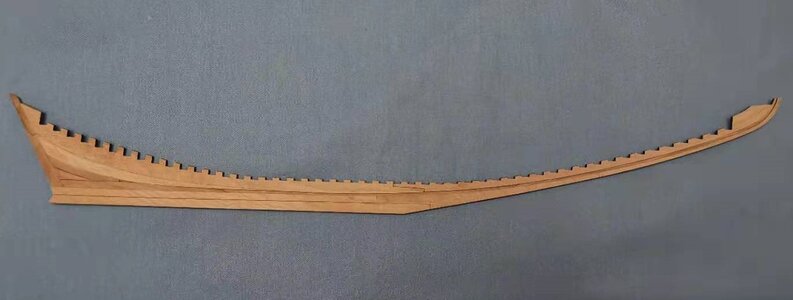
I PRESENT one completed Starboard side keel.
Stay tuned!
Seeing that we are busy with the Starboard side, I chose the appropriate drawing and this is what it looks like.


The actual sheet in wood. The side being shown above is obviously the Port Side.
Our assembly drawing looks as follows:

By now, you should all be very familiar with this drawing, BUT we need to zoom in ...

Here we can clearly see that Part # 18 needs to beveled up the indicated line before it is attached to the keel.

Part #18 removed from its sheet with the reference line clearly indicated. The red lines indicate the surface area that needs to be beveled.
The beveling in itself is not the tricky part. Here comes the challenge: Part #18 is 1mm thick and at the widest point the width measures 11mm! Can you imagine beveling an area of 11mm but the wood you have to work with is only 1mm thick? In theory that would mean that the part would be paper-thin at the bottom - in this case, theory and practice agreed totally. By the time I was finished, the sheet actually had a razor-like edge.

The beveled part glued in place. When gluing this part to the keel, make sure that you clamp the beveled portion really well to the keel and that leave it for the glue to dry properly. The piece fits beautifully into place - just look at the alignment with the sternpost! Remember Part #18 goes all the way to the top of the keel where it lines up with the notches so the fit is really extraordinary!

Here is the complete Part #18 attached to the inner keel.
TAADAAA!!!!

I PRESENT one completed Starboard side keel.
Stay tuned!


